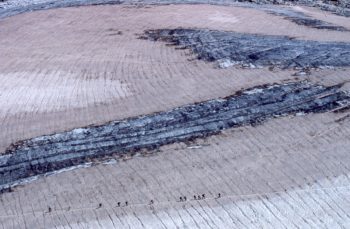It is impossible to talk about the landscape of the Pyrenees without mentioning glaciers. It was at their hand that the mountains were formed, cutting out valleys and sharpening arêtes. Their gradual retreat also left its mark in the form of mountain lakes and moraines.
On the north face of Aneto, you can see the largest glacier in the Pyrenees, measuring some 60 hectares wide and almost 20 metres thick at its deepest part (however, these figures are decreasing dramatically each year as a result of global warming). Your route to the top of Aneto will take you across this glacier, which requires the use of crampons and an ice axe.
Although it is unavoidable to walk over the glacier, you must ensure that you leave no traces of your passage behind. The only thing that you should leave is the marks from your crampons. These ecosystems are incredibly fragile, and it is up to everyone to preserve and look after them. In addition, for safety reasons, try to avoid walking directly on top of this ancient ice formation as much as possible.
Natural Monument of the Pyrenean Glaciers
The bodies of ice that today are still sheltered by the imposing peaks of the Pyrenees are the last vestiges of the great ice masses that date back 50,000 years. These glaciers and the surrounding area make up the Natural Monument of the Pyrenean Glaciers, declared as such on 21 March 1990. This protected space measures 16,087 hectares in area, covering eight massifs in the Aragonese Pyrenees: Balaïtous, Picos del Infierno, Vignemale, La Munia, Posets, Perdiguero, Maladeta and Monte Perdido.
The Pyrenean Glaciers Interpretation Centre, which is located in Eriste, offers us an insight into the past and present of these dying masses of ice.
The glaciers today
As a result of the gradual warming of planet Earth, these bodies of ice are seemingly condemned to extinction. Over the last century, the ice in the Aragonese Pyrenees has suffered an enormous setback, dramatically decreasing from an estimated 1,500 hectares in 1894 to less than 400 nowadays.
Just 19 bodies of glacial ice remain in the entire Pyrenees, with just 10 of these considered as glaciers; the remaining nine are névés that do not appear to be moving.
| PN Posets-Maladeta | Other routes |

